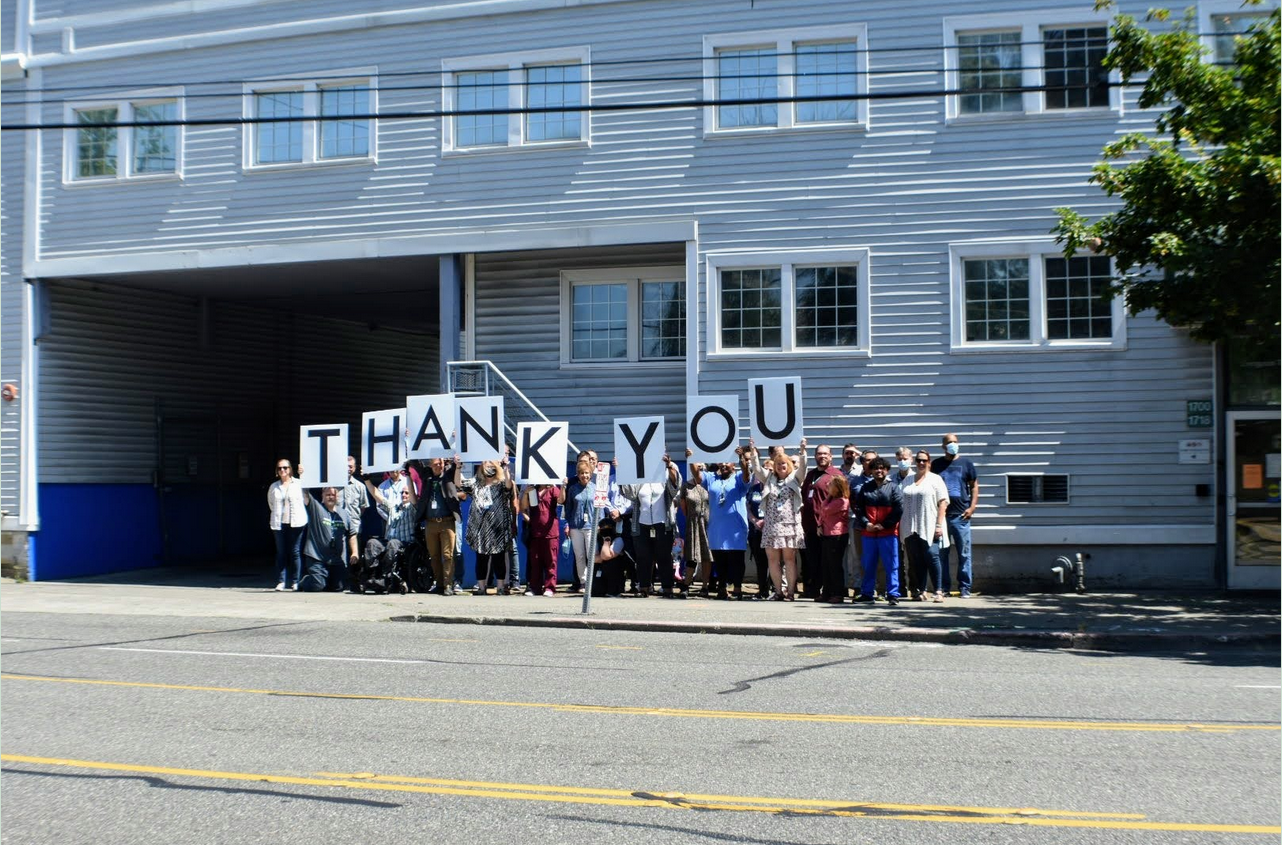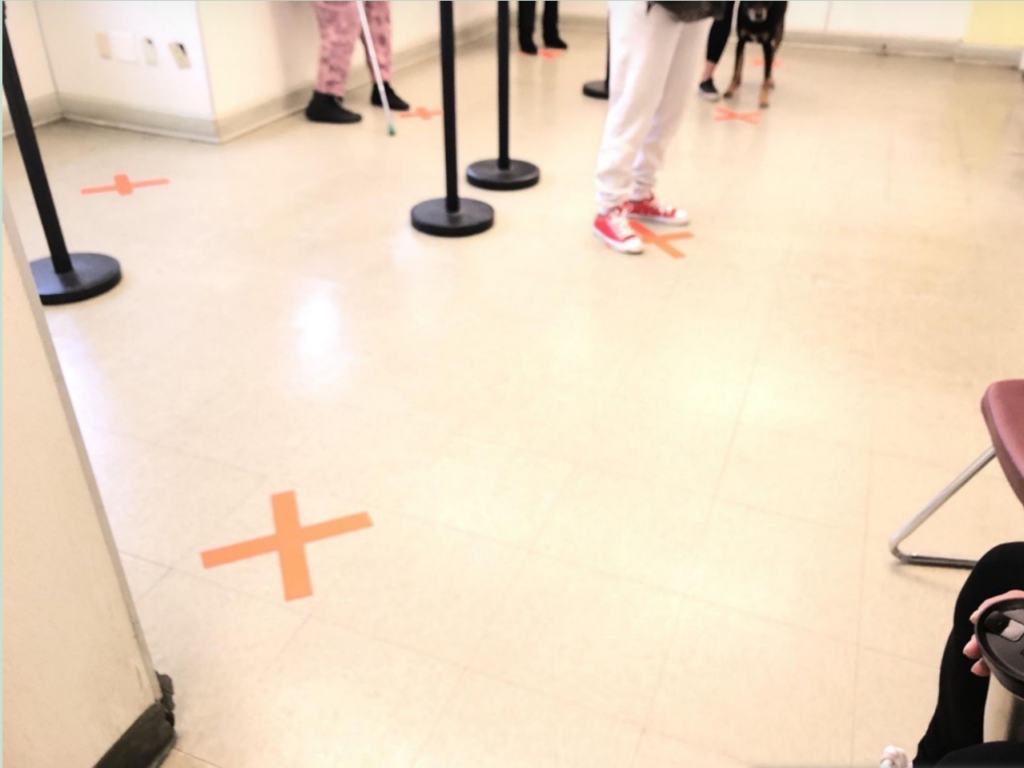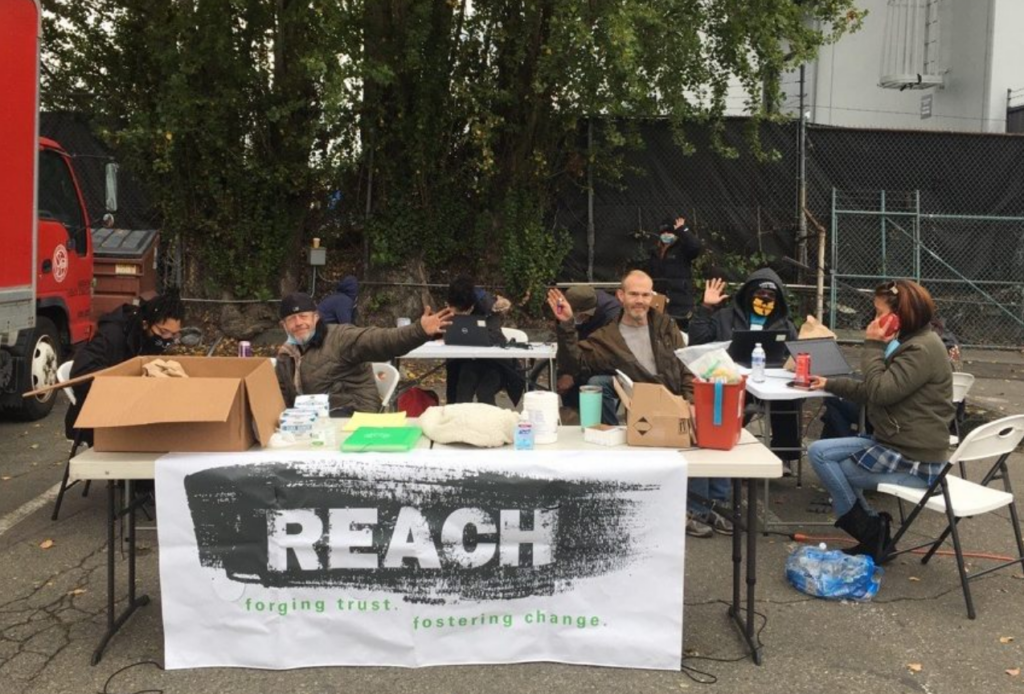
Image description: ETS purchased the Seattle Clinic building at 1700 Airport Way S, making the organization first-time property owners and ensuring a consistent presence in the community.
Evergreen Treatment Services (ETS) has been transforming lives and communities through innovative and effective addiction services for five decades. A lot has changed in 50 years. In our “ETS by the Decades” blog series, rather than attempting a full history of substance use treatment and homeless services—topics on which many volumes have been written—we share how select major U.S. events, policies, and public opinions influenced ETS’s services and practices
For the final installment, we look at the 2020s. So far, the first few years have been system upending: we’ve lived through a global pandemic and a wide-spread racial reckoning and now face a devastating fentanyl crisis that continues to take the lives of our neighbors, friends, and family members. These events have been devastating, but as with many crises, they’ve clarified what’s needed for transformational change in opioid treatment, housing policy, and racial justice. The rest of the 2020s will determine if we are able to—as a society—take this clarity and drive compassionate change forward.
If you’ve missed the first four blogs in the series, catch up by reading what happened in the70s and 80s, 90s, 2000s, and 2010s
The beginning of this decade has been marked with difficulty. Millions of people have died from COVID-19 and millions more continue to struggle with the effects of the disease. The pandemic and its accompanying social distancing measures heavily impacted Evergreen Treatment Services’ recovery support clinics and our street-based outreach team who regularly serve thousands of people. Despite other service providers closing their doors throughout this challenging time, our clinics and REACH team have continued to adjust their approach, so we can provide safe and compassionate care for people.
Chief Executive Officer Steve Woolworth began his leadership role at ETS in January 2020, only a few months before Governor Jay Inslee’s stay-at-home order on March 25th permanently changed the lives of all Washingtonians. During the early part of the pandemic, ETS’s treatment was classified as an essential service and its clinics were mandated to continue serving those with substance use disorders. This meant that for the thousands of people who come through the doors of ETS clinics each week to receive services, they—and all the ETS staff who serve them—had to put themselves at heightened risk of COVID-19 infection.

To mitigate this risk, ETS moved quickly to improve their HVAC system and create visual markers that reminded people to maintain a six-foot distance from each other while in the clinic. They also set up an outdoor dosing space for people exhibiting COVID symptoms using their Treatment in Motion vehicles. The speed and agility with which ETS made such rapid changes inspired leadership. As Director of Health Integration and Innovation Sean Soth wrote in his blog , “I have always known that the people who choose to do this work are incredible human beings, but it has been awe-inspiring to watch.”
ETS was also instrumental in advising a revised policy for its in-person treatment that would allow people to come to the clinic fewer days. The federal Substance Abuse and Mental Health Services Administration (SAMHSA) then used ETS’s revised policy as a foundation for their recommendations to all opioid treatment programs across the country. Subsequent research studies about these changes have also laid the groundwork for less restrictive policies around methadone treatment for people with substance use disorders moving forward.
On the REACH side of the organization, the team was just as inspiring. With foodbanks and other services for unsheltered people in the Puget Sound shuttered, the REACH team launched into action—at great risk to their own health and safety. Team members delivered food, set up pop-up tent locations for services, including supporting people to access online government services for offices that closed.

At the same time, the U.S. Centers for Disease Control and Prevention recommended stopping the encampment clean-ups or “sweeps” that were so prevalent pre-pandemic and have resumed after. The recommendation to stop these sweeps was founded on the fact that when people are forced to move around, they and those around them are more vulnerable to infection than they would be if they were able to stay in place.
Shelters for people living outside became disease vectors, given their cramped conditions and the number of people who pass through their doors. In response to the need, city and state officials, and leaders of social service organizations began using hotel rooms to house people who lived outside—especially those who were infected or immunocompromised and at higher risk.
According to Vice President of Policy and Strategy Chloe Gale, during the pandemic Seattle was “finally treating homelessness as a crisis.” She continued, “What we’re seeing—bright and clear—is that we’ve always had the resources to address this challenge, we just didn’t have the political will.” Many cities nationwide used unoccupied hotels to house unsheltered populations, with positive outcomes.
Alongside the pandemic, the murders of George Floyd and Breonna Taylor laid bare—to any who had previously refused to see—the stark racial divides in this country, especially in terms of policing and incarceration. Black, brown, and Indigenous people face systemic discrimination that disproportionally increases their risk of experiencing homelessness and addiction. Our clinic and REACH teams often serve people who frequently interact with the criminal-legal system and the organization has seen firsthand how unjust this system is for Black, brown, and Indigenous folks.
During this time, many staff members participated in protests across Seattle, and ETS explicitly included “build an antiracist transformational culture” a part of its strategic plan and recognized system inequities in its philosophy of care. In a statement from the board of directors, ETS said, “we believe homelessness, drug use, and addiction are first and foremost public health concerns, not criminal-legal ones. We need more housing and treatment, not more arrests. We stand in solidarity with Black Lives Matter and in the hope for a more just and compassionate society.”
ETS invested in its commitment to providing effective, compassionate care to communities of color most impacted by historic and systemic harm. The organization advocated for people living with the highest levels of systemic oppression to get first access to resources. That meant if Black people were six times more represented in the unsheltered community, then we prioritized providing housing and recovery support services to Black people. Further, to combat the principles of control and coercion sustained by the criminal-legal system, ETS staff developed partnerships with service providers that have long standing, trusting relationships within communities of color and collaborated to provide care centered on harm reduction.
Finally, on top of all these changes and challenges during the start of this decade, we are facing the deadliest wave of the opioid epidemic: the fentanyl crisis. Already high overdose deaths involving synthetic opioids like fentanyl increased over 22% from 2020 to 2021. The latest estimates from the CDC say that more than 150 people die every day from a fentanyl overdose. In King County, 22 people died because of a fentanyl overdose in 2016. The county is expected to see more than a thousand deaths in 2023.
While these challenges are daunting, ETS has been implementing and advocating for effective solutions to the increasingly deadly fentanyl crisis. These solutions include: leaning into harm reduction approaches to keep people alive and safe, treating opioid use disorders with medications like suboxone and methadone, and increasing the availability of naloxone to reverse overdose. In addition, stable housing is often a prerequisite for people to succeed in recovery, so access to safe and affordable housing is essential to saving lives.
The last five decades have demonstrated ETS’s dedication to compassionate care for some of the most vulnerable people in the Puget Sound. The 2021 purchase of its Airport Way facility and plan to develop that property as a community recovery center built on harm reduction approaches is a major undertaking for the organization. But acquiring this property ensures a permanent place for the organization to continue providing effective care in the region and for the people we serve to have a safe, caring space where they belong.




